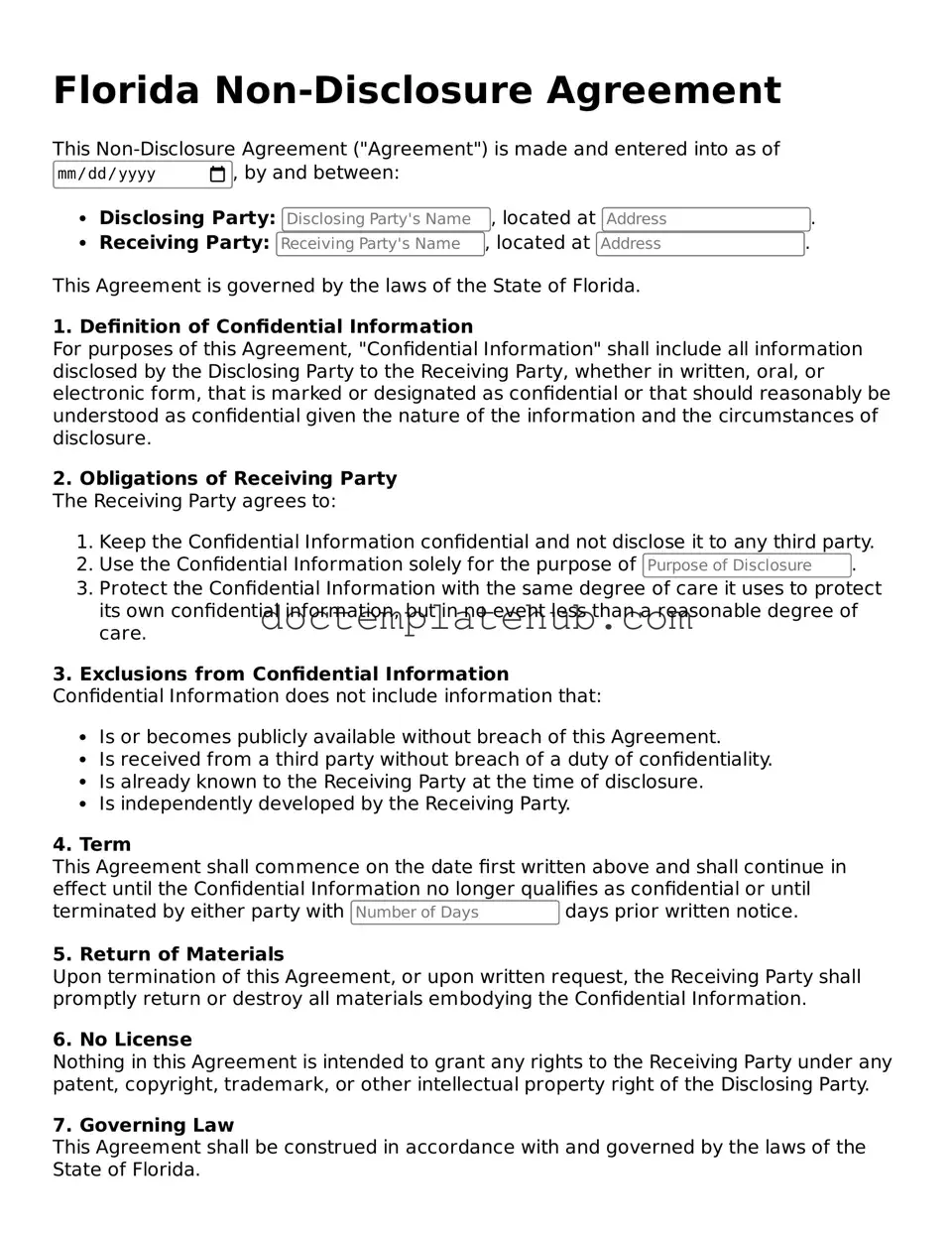A Confidentiality Agreement serves a similar purpose to the Florida Non-disclosure Agreement. Both documents aim to protect sensitive information shared between parties. While a Non-disclosure Agreement may focus on trade secrets, a Confidentiality Agreement can encompass a broader range of confidential information, including business strategies and client lists. The key difference lies in the scope of information covered, but both require the receiving party to maintain secrecy.
A Mutual Non-disclosure Agreement is another document akin to the Florida Non-disclosure Agreement. This type of agreement involves two parties agreeing to protect each other’s confidential information. Unlike a standard Non-disclosure Agreement, which may involve one party disclosing information to another, a Mutual Non-disclosure Agreement ensures that both sides are equally obligated to safeguard proprietary data. This is particularly useful in negotiations where both parties may share sensitive information.
A Proprietary Information Agreement also shares similarities with the Florida Non-disclosure Agreement. This document specifically focuses on proprietary information, which is often a subset of confidential information. Like the Non-disclosure Agreement, it binds the recipient to confidentiality, but it may also include clauses related to the ownership of the information. This ensures that the disclosing party retains rights to their proprietary data even after the agreement ends.
An Employment Non-disclosure Agreement is commonly used in the workplace and resembles the Florida Non-disclosure Agreement in its intent to protect sensitive information. Employees may be required to sign this document to prevent them from disclosing trade secrets or other confidential information gained during their employment. The primary difference is that this agreement is typically tied to an employment relationship, whereas a Florida Non-disclosure Agreement can be used in various contexts.
A Non-compete Agreement often accompanies Non-disclosure Agreements, especially in business contexts. While the Florida Non-disclosure Agreement focuses on confidentiality, a Non-compete Agreement restricts an individual’s ability to work in similar industries or start competing businesses for a specified time period. Both documents aim to protect business interests but do so in different ways, with the Non-compete Agreement addressing competition rather than information sharing.
A Non-circumvention Agreement is similar to the Florida Non-disclosure Agreement in that it protects relationships and sensitive information. This type of agreement prevents one party from bypassing the other to pursue business opportunities directly. While the Non-disclosure Agreement focuses on confidentiality, the Non-circumvention Agreement emphasizes the importance of maintaining business relationships and ensuring that both parties benefit from shared information.
A License Agreement can also bear similarities to a Non-disclosure Agreement, particularly when it involves the sharing of proprietary information. In a License Agreement, one party grants permission to another to use certain intellectual property while often requiring confidentiality regarding that information. Both documents protect sensitive information, but a License Agreement typically involves the transfer of rights or permissions alongside confidentiality obligations.
A Collaboration Agreement may also resemble the Florida Non-disclosure Agreement when it comes to protecting shared information. In collaborative projects, parties often share sensitive data and ideas. A Collaboration Agreement outlines the terms of cooperation, including confidentiality clauses similar to those found in Non-disclosure Agreements. Both documents aim to ensure that proprietary information remains protected throughout the collaboration.
Lastly, a Partnership Agreement can share common elements with the Florida Non-disclosure Agreement, particularly regarding confidentiality provisions. When two or more parties enter into a partnership, they often exchange sensitive information about their respective businesses. A Partnership Agreement typically includes clauses that protect this information, similar to those found in Non-disclosure Agreements, ensuring that all parties maintain confidentiality as they work together.
